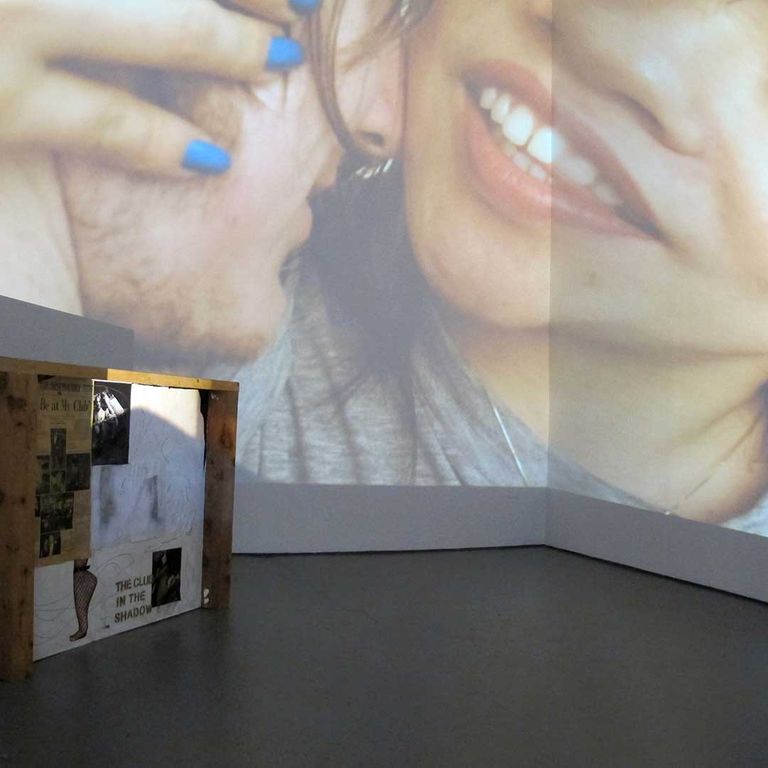Matthew Higgs Is a National Treasure
Without the constant incursion of new art, odd ideas, and indigenous talent ÔÇö the necessary lifeblood of alternative and artist-run spaces in New York ÔÇö our fair metropolis might only be the undisputed trading floor for the art world. That, and a place where artists live but arenÔÇÖt featured as much as they might be. Because, while commercial galleries are amazing places for artists ÔÇö vehicles where art goes into the world, money comes back into the art world, and crucial conversations are commenced ÔÇö these days, with rents so high and the stakes so great, galleries ÔÇö as important as they are ÔÇö have to be more for commerce and the support of artists already in the system, and less about constant iffy experimentation and risk-taking. Both in times when thereÔÇÖs no money and times like these, when the art world can seem awash in it, alternative spaces are more important than ever.
Thankfully, alternative spaces like the Swiss Institute, the Kitchen, Artists Space, and others are all in great shape and going strong. And then thereÔÇÖs White Columns. Established in 1970 as an experimental platform for artists in Soho and known then as 112 Workshop or 112 Greene Street, White Columns is New YorkÔÇÖs oldest continually run alternative exhibition space. ItÔÇÖs hard to imagine the last almost-half-century of art life here without it. Scary might be a better word, or depressing. White Columns has changed my life a half-dozen times at the very least, and kept me on my toes for decades. Over the years, many artists had early showings here, including Barry Le Va, Kiki Smith, William Wegman, Sonic Youth, Jack Goldstein, David Wojnarowicz, Felix Gonz├ílez-Torres, Andres Serrano, Cady Noland, John Currin, Glenn Ligon, and others. When I first saw NolandÔÇÖs cutout aluminum sculptures silk-screened with images, I didnÔÇÖt even see them as art. And John CurrinÔÇÖs early Breck-girl portraits left me lost in the space between sincerity and irony as assuredly as Poe suspended a character over a pit with a razor-bladed pendulum overhead. More astonishing, this venerable space ÔÇö which since 2005 has shown more than 500 artists in its medium-size galleries ÔÇö has stayed in front of the taste curve, setting the agenda more often than following it. This is no mean feat considering how many of these spaces often ossify and fade away completely, or worse, die on the vine in irrelevance.
Which brings us to White ColumnsÔÇÖ current magnificent and munificent director, Matthew Higgs ÔÇö also a curator, artist, DJ, and producer from an early age. And what a biography. In 1981, at the age of 16 and after already having watched Joy Division rehearse on Sunday afternoons for few years, this precocious Manchester native promoted New OrderÔÇÖs first nationally advertised concert at a local youth club. After that, he went to art school in Newcastle-upon-Tyne with gallerist Gavin Brown, whom he made paintings with (IÔÇÖd love to see a show of these!). In 1993 in London, he started publishing projects with then-unknown artists like Peter Doig, Elizabeth Peyton, Chris Ofili, and Jeremy Deller, among others, and went on to write well about art for ArtForum, among other places, and was then a director of exhibitions at LondonÔÇÖs storied ICA (the place where Pop Art was actually born).
In the fall of 2004, New York got lucky. ThatÔÇÖs when Higgs began his current stint as White ColumnsÔÇÖ director. HeÔÇÖs been nailing it the whole time. Over the years, heÔÇÖs made hundreds of local studio visits, responding to changes on the ground accurately and with foresight. Each year he has had outside curators selecting a summing-up show of the previous season; among others, he selected curators like Jay Sanders (who went on to the Whitney), Clarissa Dalyrmple, and Robert Nickas (two of the sharpest eyes in New York). In 2008, he did a project with artist-extraordinaire Oliver Wasow ÔÇö whom others are only catching up to now. Higgs has exhibited the paintings of writer Wayne Koestenbaum (nice work), the art collection of the greatest photography critic alive, Vince Aletti, and staged a historical exhibition documenting the history of ACT UP New York, as well as hosting an installation by Fierce Pussy. Last month, he had artist Verne Dawson curate an extraordinary exhibition of the unknown paintings of the late Bill Lynch. For years, he has collaborated with centers that support artists with developmental disabilities, including amazing places like Creative Growth (Oakland, California), Healing Arts Initiative (New York), and NIAD (Richmond, California), among others.
Kind and sweet, Higgs is attentive, always seemingly carrying a nattered bag with books, old publications, or vinyl records about, and is quick to recommend other peopleÔÇÖs shows or share ideas. HeÔÇÖs got a feel for drawings, ceramics, so-called craft-arts, and an eagle eye for art as well. Since 2004, heÔÇÖs curated over 200 exhibitions and not only put White Columns back on the map after a few fading years but branched out from showing mainly local artists, and the space now has a real international outlook and is observed from all over the world. More than that, heÔÇÖs among the leaders in New York and the world of looking for art everywhere, a true champion of so-called outsider art and the art of the developmentally disabled. For this alone, he deserves some kind of MacArthur. His street cred is solid as well, giving the first New York shows to artists like Ella Kruglyanskaya, Margaret Lee, Eileen Quinlan, Alexandre Singh, and Magdalena Suarez Frimkess, among others. Not to mention curating (with Catherine Morris) the great outsider Judith Scott retrospective at the Brooklyn Museum.
Sometimes smaller institutions and alternative spaces like White Columns find a director creating a program that in some intangible but troubling way feels like an extended audition for another stop on the way up the curatorial-museological ladder. Or the director is so autocratic and agenda-driven that they use the funds for drilling relentlessly into only one aspect of art, as if trying to win a footnote in art-history books or securing a teaching job in the university. But Higgs is going all out for his organization and for New York, art and artists everywhere. All while heÔÇÖs keeping his ideas and eye fresh and his ego out of the way.












